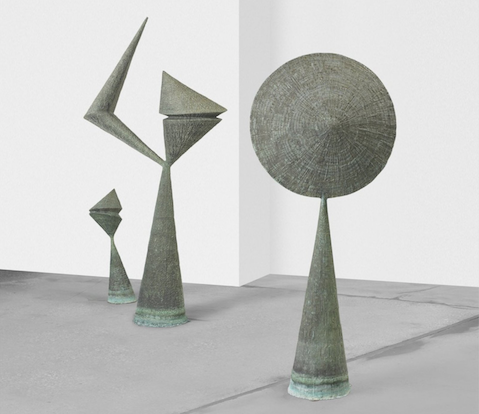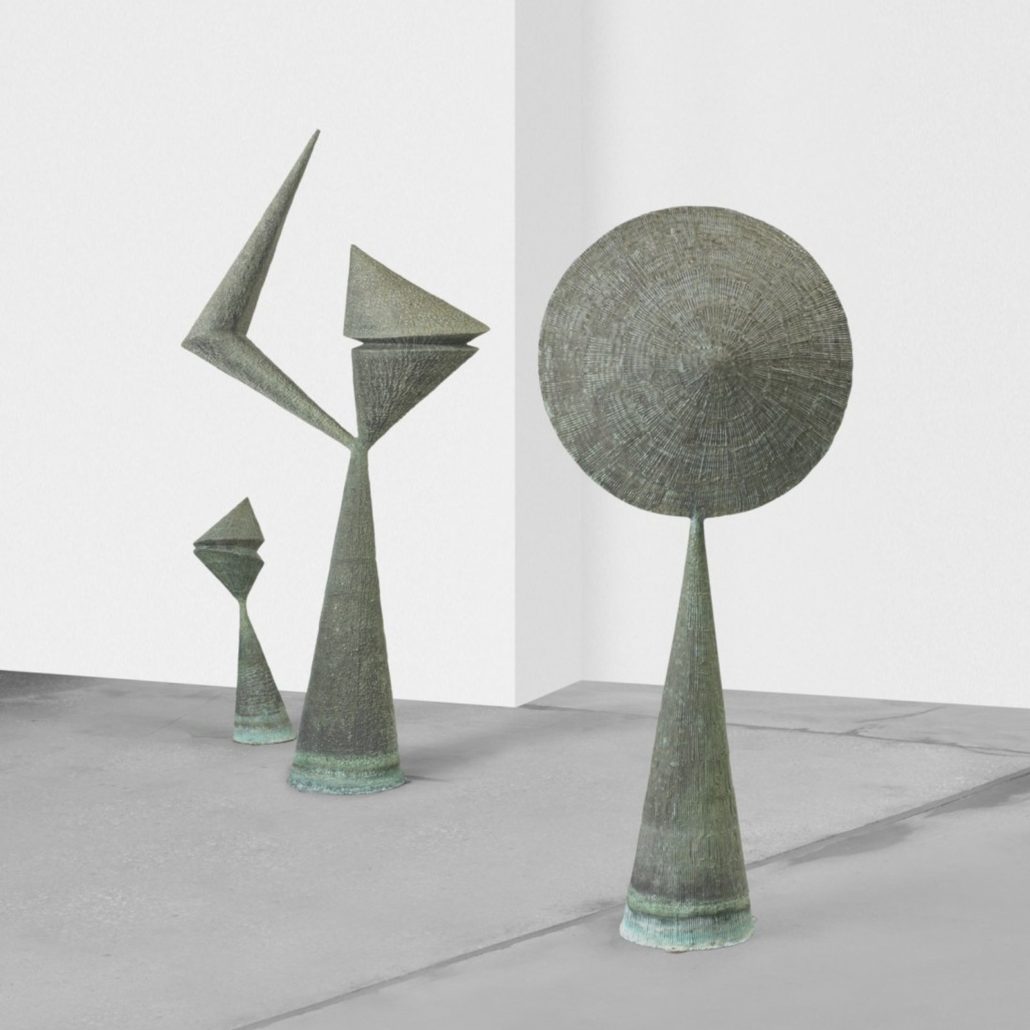
NEW YORK — Harry Bertoia’s artistic gifts were so apparent from an early age in his native Italy that legend has it local brides sought him out to design their wedding embroidery patterns. As a child, he took a few drawing lessons from a local teacher, who quickly told his family he had nothing more to teach him and advised that they send him to Venice or the United States to continue his studies.
At age 15, living with an older brother in Detroit, Michigan, Bertoia was well on his way to achieving the storied career that awaited him as a furniture designer, jeweler, printmaker, and sculptor. In 2018, 40 years after his passing, interest in in his work remains as high as ever.
He undertook a life-changing residency at the Cranbook Academy of Art in Detroit, where he studied art and learned from artists like sculptor Carl Milles, ceramicist Maija Grotell, architect and resident ceramicist Walter Gropius; and the Saarinen family, who led the art community there. One of his fellow students was Charles Eames, who went on to achieve his own success as a furniture designer.

It was at Cranbrook that Bertoia joined the “art to wear” movement. Starting in 1939, he created jewelry pieces whose style would be revived later in some of his early sculptures. Metal was scarce during World War II, so he turned to jewelry because it could be made with alternative materials.
He also fully embraced his passion for printmaking, first as a student, and then in his last year there, 1943, as a graphics instructor. At Cranbook, Bertoia created groundbreaking works, playing around with techniques to make unique prints called monotypes, which rank as some of his best graphic productions. A monotype differs from traditional prints intended for editions. With a monotype, the artist instead directly applies paint or ink to the plate before the image is transferred to paper, thus yielding a unique work of art.
Bertoia’s innovations were immediately acclaimed, starting with a grouping of around 100 prints he sent for evaluation to the Guggenheim Museum. The artist was shocked when the Guggenheim acquired all of them. A 1943 exhibition at the famed New York museum featured a record 19 works from that particular selection of prints — the most for any artist in that show, which also included Laszlo Moholy-Nagy and Charles Smith
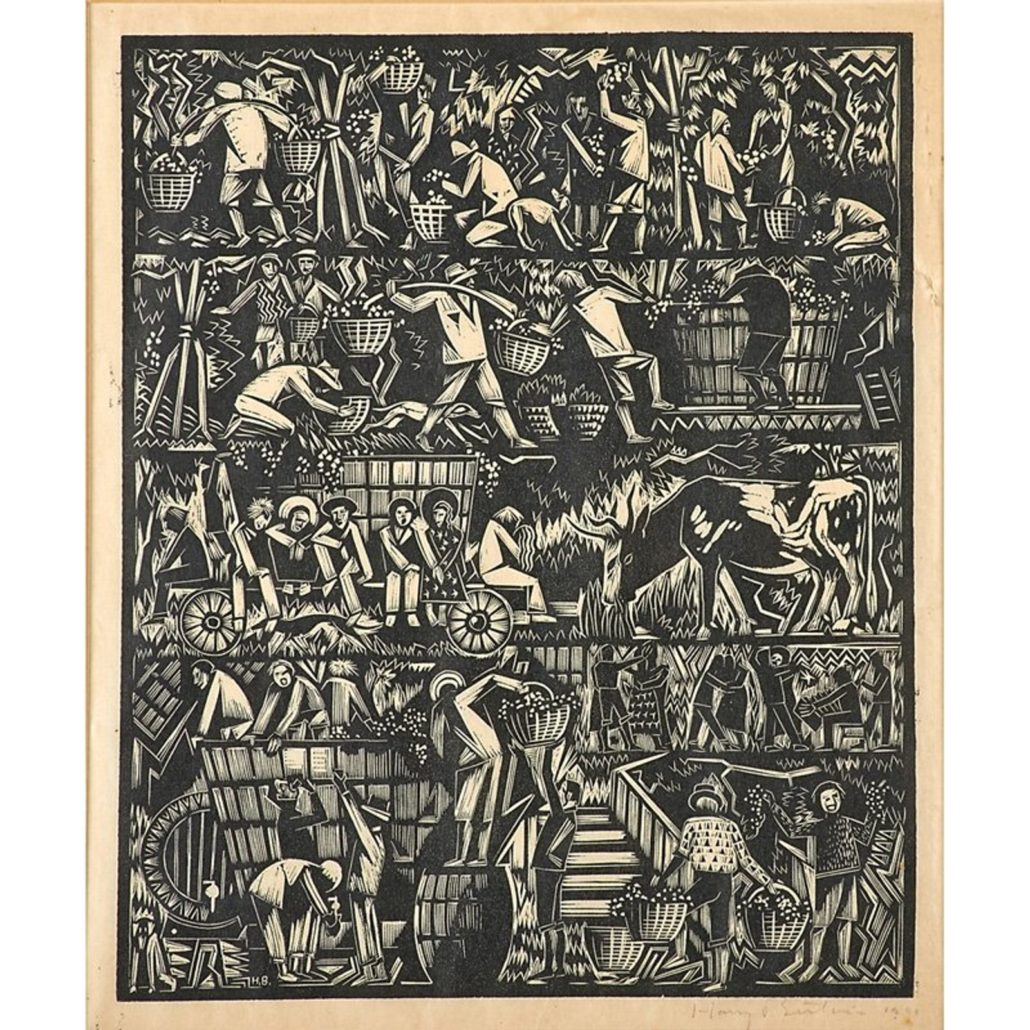
After leaving Cranbook, Bertoia headed west to California to work with Charles Eames. They experimented with ergonomic furniture solutions, particularly for seating, using molded plywood. This work was the outgrowth of a a design competition at the Museum of Modern Art in New York where an Eames/Saarinen Cranbrook chair design won in the organic furniture design category. The chair was a success, but Eames and Bertoia now needed to develop a way to mass-produce it. It was around this time, too, that Eames funded Bertoia’s welding class, giving him a skill that he would use in several artistic disciplines, particularly sculpture.
A few years later, Bertoia headed to Pennsylvania to begin what would be his most successful partnership. At the behest of Florence Knoll, who was familiar with Harry’s work at Cranbook, and Hans Knoll (Knoll Inc.), he settled his family into a farmhouse on a property where his original shop was established. That property remains in the family to this day. The Knolls gave Bertoia full license to run with his designs and properly recognized his work and contributions. Knoll’s Bertoia chair collection debuted in 1952, ushering in a wave of modern furniture, part of the movement later known as midcentury modern.

“My father is best known for the Bertoia collection for Knoll – the midcentury modern chairs he designed in the 1950s,” his daughter Celia Bertoia recalled in an interview for Auction Central News. Celia is the founder and director of the Harry Bertoia Foundation, which works to educate the public about the revered artist’s work and modern art in general. “Ironically, he spent only two years of his career working for Knoll, 1950 to 1952. The financial stability he gained from a modest lump-sum buyout from Knoll allowed him to move on to sculpture, which was his true passion.”
“His largest legacy is really the Sonambient sculptures, the sounding tonals that he focused on from 1960 to 1978. This was something new in those days; art that moves and tones. It changed possibilities for sculpture from a static three-dimensional visual to a multi-sensorial experience,” Celia said. “A viewer can enjoy the visual, sonic, textural and vibratory aspects. The tall sleek elegance comes alive when touched or moved by the wind and turned into a kinetic sounding adventure.”
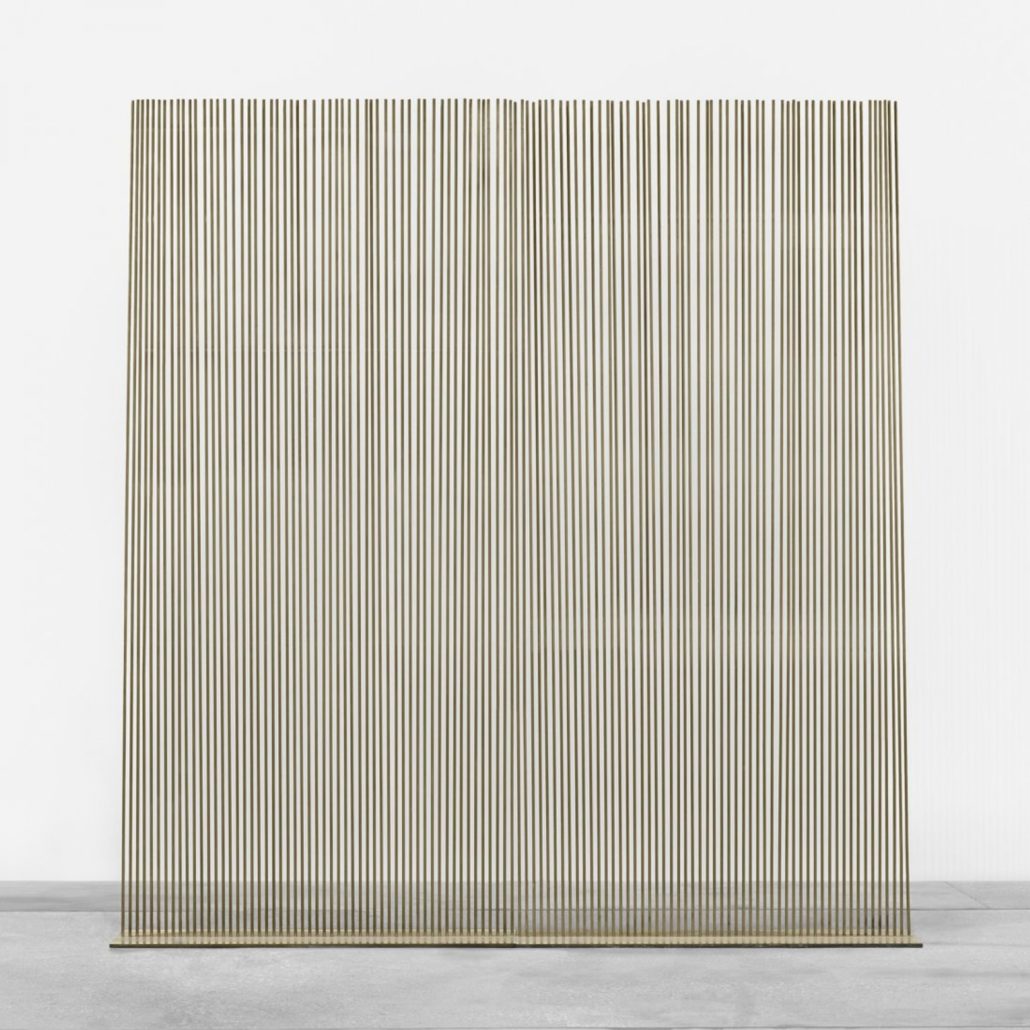
While Bertoia’s original audience has mostly passed on, a whole new generation is discovering Bertoia, both in midcentury modern furniture classics and in the Sonambient music realm. “We partner with an alternative music distributor (Important Records) who has a niche market of electronic music buffs who are just crazy about Sonambient,” Bertoia said. “His ethereal music fits right in with the computer generated sounds of today.”
Among the most desirable/collectible forms of Bertoia’s works, his daughter said, are his sculptures. “The bush-style Bertoia sculptures are especially coveted right now, particularly the larger, more undulating forms. Their organic character, the detail of the buds and branches, and the sheer beauty take one’s breath away. Branching off from the bushes are the dandelions which are also quite collectible.”
“The gold-plated sunbursts are simply spectacular, although rather costly as well. I’m also pleased to see the monotypes becoming more accepted and sought after in the last few years. The graphics, mainly the colorful ones, were considered highly desirable in the 1940s and 1950s, and most major museums have a handful of Bertoia monotypes in their permanent collections.” Celia said. “They almost went underground for a few decades and are just now emerging as Bertoia art in their own right. And they are affordable.”
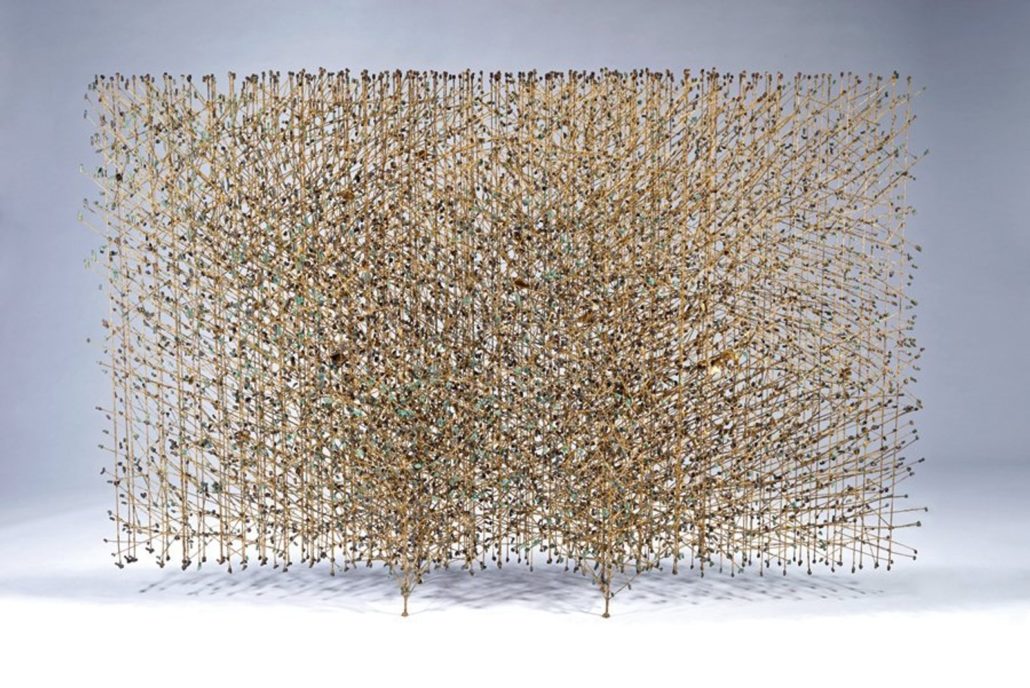
What should new collectors be buying and what should they be wary of?
“The monotypes are original, affordable, and cosmic. Harry highly valued the monotypes as a record of his artistic career, placing an insurance value of $5,000 on each — a price they are just now reaching in the market. Buy the best you can afford.”
“On the other hand, when looking for Sonambient sculptures, be careful,” Celia continued. “A Harry Bertoia tonal will have clean, neat welding, will sound rich and full, and will create an overall pleasing experience. If you see sloppy welding, numbers or initials stamped on the base, or a generally shoddy impression, it is probably not by Harry Bertoia.”
“Our suggestion is also to stay away from the stainless steel spray or plume sculptures, as there are numerous forgeries. If you find a possible Bertoia at an estate sale, or some little antique shop, or for a very low price online, it is probably not authentic. You can always run it by us here at the foundation if you’re a little nervous the first time or two, and we are happy to take a quick look at no charge. And remember to buy what you love!”
“All of Bertoia’s designs, whether chairs or jewelry or sculpture, contain a certain timelessness and beauty that transcend any specific time period,” Celia said in summary. “You can place a Bertoia chair in a modern building and it fits perfectly. A bush or a wire construction is as appropriate in a 2018 home as it is in an old Victorian. Good design is ageless and enduring.”
________
Our sincere thanks to Celia Bertoia for her time and invaluable insight. Click to visit the Harry Bertoia Foundation online.


